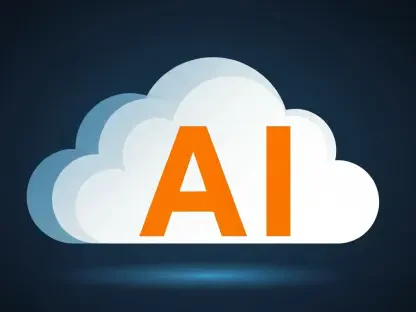Imagine a world where physical therapists can focus entirely on patient care, unburdened by endless paperwork, while patients receive personalized recovery plans tailored to their unique needs through the power of technology. This scenario is no longer a distant dream but a reality unfolding across clinics worldwide, driven by artificial intelligence (AI) in physical therapy software. The integration of AI is revolutionizing how rehabilitation is delivered, shifting the industry from traditional administrative tools to intelligent platforms that enhance clinical outcomes and operational efficiency. This report delves into the current state of the physical therapy software landscape, explores key trends and challenges, and offers a forward-looking perspective on how AI is reshaping rehabilitation for both providers and patients.
The Current Landscape of Physical Therapy Software
Physical therapy software has long served as a backbone for managing clinic operations, handling tasks like scheduling, billing, and patient record-keeping. However, the industry has undergone a significant transformation in recent years, with platforms evolving into sophisticated systems that support clinical decision-making. This shift is fueled by technological advancements and increasing regulatory demands, such as those from the Centers for Medicare & Medicaid Services (CMS), which emphasize measurable outcomes for reimbursement.
Today, leading market players like WebPT, Medbridge, and OneStep are at the forefront of this evolution, integrating AI to offer tools beyond mere administration. These platforms now provide features such as automated documentation and real-time compliance feedback, enabling therapists to prioritize patient interaction over paperwork. The growing significance of such software in healthcare reflects a broader trend toward digital solutions that address both operational and clinical needs in an increasingly complex environment.
The impact of these advancements is evident in how clinics manage rising costs and patient expectations. With regulatory pressures mounting, the adoption of AI-driven tools has become not just an option but a necessity for many practices aiming to stay competitive and compliant. This changing landscape sets the stage for deeper innovations that promise to redefine the standards of care in physical therapy.
Key Trends and Innovations in AI-Driven Physical Therapy
Emerging Technologies and Care Models
AI is spearheading a wave of innovation in physical therapy, introducing technologies that enhance both clinician efficiency and patient engagement. Motion capture and computer vision, for instance, enable remote therapeutic monitoring (RTM) by analyzing patient movements with precision, allowing therapists to track progress outside traditional clinic settings. Such tools offer objective data on range of motion and gait, paving the way for tailored interventions.
Additionally, predictive analytics plays a pivotal role in personalizing care by forecasting recovery patterns and identifying potential adherence issues. Automation of documentation further alleviates clinician burnout by reducing time spent on administrative tasks, while hybrid care models—combining in-clinic and at-home therapy—gain traction as a response to evolving patient needs. These advancements collectively aim to create a seamless experience for both providers and those under their care.
The focus on patient engagement is another critical aspect, as AI tools provide real-time feedback and interactive home exercise programs. By addressing challenges like therapist workload and access to care, these emerging technologies are not only improving outcomes but also redefining how therapy is delivered in a digital age.
Market Growth and Performance Metrics
The physical therapy software market is experiencing robust growth, reflecting the increasing reliance on AI-driven solutions. Current projections estimate the market to expand from USD 1,404.8 million in the current year to USD 2,784.8 million by 2031, achieving a compound annual growth rate (CAGR) of 10.27%, according to industry analyses by Kings Research. This upward trajectory underscores the demand for tools that enhance compliance and clinical results.
Adoption rates are accelerating as healthcare providers recognize the value of integrating intelligent systems to meet stringent quality standards. The push for better outcomes, coupled with the need for operational efficiency, drives investment in these technologies across diverse practice settings. Smaller clinics and larger enterprises alike are beginning to see the benefits of scalable software solutions.
Looking ahead, the market’s expansion is expected to be fueled by continuous innovation and a growing emphasis on data-driven care. As more practices adopt AI tools, the industry anticipates a significant shift toward widespread implementation, positioning physical therapy software as a cornerstone of modern rehabilitation strategies.
Challenges in Adopting AI Solutions for Physical Therapy
The integration of AI into physical therapy practices, while promising, faces several hurdles that must be addressed for broader acceptance. Data privacy and security remain paramount concerns, especially with regulations like HIPAA mandating strict protection of patient information. Ensuring that AI systems safeguard sensitive data without compromising functionality is a critical challenge for developers and providers alike.
Beyond privacy, the clinical validation of AI tools poses another barrier, as therapists require assurance that predictions and metrics are reliable for decision-making. Workflow integration also presents difficulties, as poorly designed systems can add to clinician burden rather than reduce it. Addressing these issues through intuitive design and comprehensive training is essential to facilitate smooth adoption in busy clinical environments.
Cost and access disparities further complicate the landscape, particularly for smaller or rural clinics lacking the resources to implement advanced technologies. This digital divide risks creating inequities in care delivery, highlighting the need for scalable solutions that cater to diverse practice sizes. Overcoming these obstacles will be crucial to ensuring that AI benefits reach all corners of the physical therapy sector.
Regulatory Environment and Compliance Standards
The regulatory framework surrounding AI in physical therapy software is a complex web that shapes development and deployment. HIPAA stands as a cornerstone for data protection, requiring robust safeguards to prevent breaches of patient confidentiality. Compliance with such standards is non-negotiable, influencing how software vendors design their products to prioritize security alongside innovation.
Additionally, certain AI tools may fall under FDA oversight if classified as medical devices, introducing another layer of scrutiny to ensure safety and efficacy. This potential regulation underscores the importance of rigorous testing and validation before market entry. CMS policies further impact the industry by linking reimbursement to demonstrable outcomes, pushing developers to align software features with quality metrics.
Navigating this environment demands a careful balance between technological advancement and adherence to legal requirements. Software providers must stay agile, adapting to evolving standards while maintaining a focus on delivering value to clinicians and patients. The interplay of these regulations ultimately guides the direction of AI applications in rehabilitation, ensuring they meet both ethical and practical benchmarks.
Future Directions of AI in Physical Therapy
The horizon for AI in physical therapy brims with potential, driven by emerging opportunities that could further transform the field. Hybrid care models, blending in-clinic sessions with at-home therapy, are poised to become standard, supported by advancements in RTM and telehealth capabilities. This approach promises greater accessibility, allowing patients to receive consistent care regardless of location.
Explainable AI (XAI) is another area of promise, offering transparency into how recommendations and predictions are generated, thereby fostering trust among clinicians and patients. Interoperability with electronic health records (EHRs) also stands to enhance the utility of AI tools, enabling seamless data sharing across healthcare systems. Moreover, generative AI could play a role in patient coaching, providing real-time guidance through conversational interfaces during exercises.
Global healthcare trends toward personalization and accessibility will continue to influence these developments, alongside regulatory shifts and ongoing innovation. As AI becomes more integrated into daily practice, the focus will likely shift to creating inclusive solutions that address diverse patient needs while maintaining high standards of care. This forward momentum signals a future where technology and human expertise converge to optimize rehabilitation.
Conclusion and Industry Outlook
Reflecting on the insights gathered, it becomes clear that AI has already begun to redefine physical therapy through intelligent software solutions that enhance clinical care and streamline operations. The exploration of trends, challenges, and regulatory landscapes reveals a sector at a pivotal moment of transformation. Key innovations like motion capture and predictive analytics have demonstrated their capacity to improve patient outcomes, while barriers such as privacy concerns and access disparities demand attention.
Moving forward, stakeholders are encouraged to prioritize scalable and inclusive technologies that can bridge the digital divide, ensuring smaller clinics and underserved populations benefit from AI advancements. Investment in training and intuitive design is deemed essential to ease clinician adoption, while collaboration between developers and regulators could help establish clear guidelines for validation and compliance. These actionable steps promise to sustain the momentum of growth in the industry.
Ultimately, the journey ahead hinges on a commitment to balancing innovation with responsibility. By focusing on transparency through explainable AI and fostering interoperability with broader health systems, the physical therapy software sector can solidify its role as a vital component of modern healthcare. This path, though challenging, offers a compelling opportunity to shape a more efficient and patient-centered future in rehabilitation.









